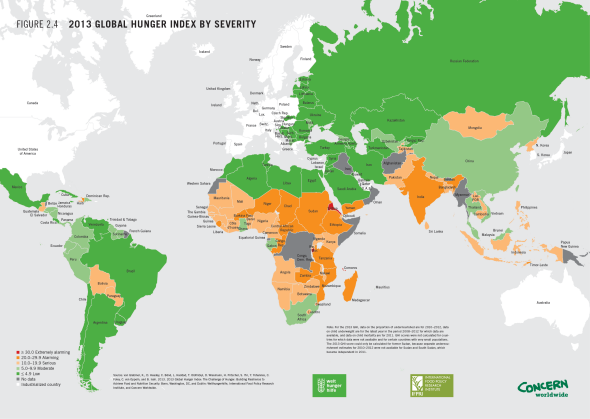Which means it is clear that we--you and I and billion others--go about our lives fully knowing that there are hundreds of millions of people around the world who are terribly poor. Depending on our own economic levels, we spend money in various ways that we know will be tremendously useful if we spent it on the poor instead.
Many of us are religious too, and every religion instructs its believers to take care of the poor. No religious leader teaches the faithful to ignore those in need.
Yet, we carry on with our lives while ignoring the poor. Are we heartless bastards?
A few years ago, I reflected in this piece at Planetizen on my struggles in figuring out how to draw the line between my life and the problems of the world, especially about poverty:
Growing up in India I always felt awkward and uncomfortable when we watered our garden while squatters stood outside the fence hoping to collect a pot or two of water. Eating candies in a railway station while malnourished children begged for food was another guilt-provoking event.My point is that I simply did not wake up thinking about this blog post--it has been a struggle all my life. The post is merely a trigger response to a couple of readings that came my way.
First this, on world hunger--a lack of enough food:
I bet you don't even have to refer to the map-legend to figure out that green means good.
Though there are still roughly 870 million hungry people in the world according to the Food and Agriculture Organization, the trends are positive overall, with global hunger falling by one third since 1990.870 million hungry people. Think about that number for a minute. It gets difficult, at least for that one minute, to eat while you read all this, right?
Isn't it amazing that we will continue on with our lives even after knowing that there are at least 870 million hungry people on this planet? Including children?
We have no doubts that poverty is real. So?
For reasons I cannot entirely explain, transformative change has always come from economic development, and economic development has always come from economic liberalization. It comes from trade, economic freedom, capital formation (including education), peace, and the absence of corruption. Mosquito nets will save lives, but they will not make the poor rich.Yes, you buying the iPhone not only makes you feel better, it also helps millions bring themselves out of poverty. You don't believe me? Ask the Chinese for evidence on this!
The best ways to assist with economic liberalization are unknown to me, but by participating in world trade, we make it more attractive for countries to join in and less attractive for countries to opt out. So, the best way for me to do good is to do what I already was doing.
Which is convenient and a relief, because I was going to keep doing it anyway.

2 comments:
Yes - economic activity is the only cure for poverty - not income redistribution. But politicians and bleeding heart liberals find it so difficult to get this.
By the way, I am amazed at your graphic. I cannot imagine India amongst the world's hungriest and certainly not worse off then Pakistan. I think they have used child mortality as a big factor and that has a significant public health contribution to it in addition to hunger. There is rampant poverty in India, of course, but a huge incidence of hunger ??? - I don't believe it.
Yes, without economic growth it almost always becomes a situation of making everybody poor (Cuba, the old China, ....) economic growth does widen the divide between the poor and the rich, but that inequality comes with a large-scale reduction in material poverty. The irony that a Communist Party had to demonstrate this and, yet, as you mention, people find it difficult to get it ...
The graphic is from the Global Hunger Index. And, yes, child mortality is one of the weights used in the index:
"To reflect the multidimensional nature of hunger, the GHI combines three equally weighted indicators into one index:
Undernourishment: the proportion of undernourished people as a percentage of the population (reflecting the share of the population with insufficient caloric intake)
Child underweight: the proportion of children younger than age five who are underweight (that is, have low weight for their age, reflecting wasting, stunted growth, or both), which is one indicator of child undernutrition
Child mortality: the mortality rate of children younger than age five (partially reflecting the fatal synergy of inadequate food intake and unhealthy environments)
Post a Comment